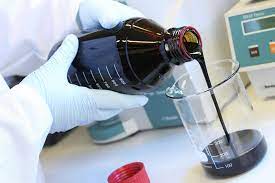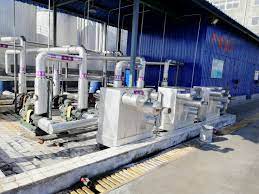Dispersent
A dispersant, also known as a dispersing agent or dispersing additive, is a chemical substance that is used to facilitate the dispersion or homogenization of solid particles or liquid droplets within a liquid medium. Dispersants are commonly employed in various industries and applications, including:


Paints and Coatings:
Dispersants help to evenly distribute pigments, fillers, and additives in paint formulations. They improve the stability, color strength, and gloss of the paint, allowing for better coverage and a smooth finish.
Inks:
Dispersants are used in ink formulations to disperse colorants, such as pigments or dyes, ensuring uniform color distribution and preventing agglomeration or sedimentation. They contribute to the stability and print quality of inks used in printing processes.
Adhesives and Sealants:
Dispersants aid in the dispersion of fillers, such as mineral powders or fibers, in adhesive and sealant formulations. They enhance the workability, viscosity, and mechanical properties of the final product.
Ceramics and Glass:
Dispersants are utilized in the production of ceramic and glass materials to stabilize suspensions of particles and prevent sedimentation during processing. They improve the homogeneity and flow properties of ceramic slurries and glass melts.
Personal Care Products:
Dispersants find application in personal care products, such as lotions, creams, and cosmetic formulations. They help to disperse oils, pigments, and other ingredients uniformly, improving the stability, texture, and sensory properties of the product.
Pharmaceuticals:
Dispersants are used in pharmaceutical formulations, such as suspensions or emulsions, to ensure the uniform distribution of active pharmaceutical ingredients (APIs). They aid in maintaining the stability and bioavailability of the drug product.
The specific functions and properties of dispersants include:
- Wetting: Dispersants reduce the surface tension between the solid particles or liquid droplets and the liquid medium, facilitating their uniform dispersion and preventing agglomeration or coalescence.
- Stabilization: Dispersants provide electrostatic or steric stabilization, which hinders particle aggregation and sedimentation by creating repulsive forces or forming a protective layer around the particles.
- Rheology Control: Dispersants can influence the viscosity, flow behavior, and thixotropic properties of the liquid medium, allowing for better control over the formulation’s consistency and application characteristics.
- Compatibility: Dispersants are designed to be compatible with the specific system or formulation in which they are used, ensuring their effectiveness without causing adverse interactions or performance issues.
It’s important to select the appropriate dispersant based on the specific application, compatibility with the ingredients, desired properties, and processing conditions. Manufacturers of dispersants provide technical data sheets and guidelines for their optimal usage, including recommended dosage levels, mixing procedures, and storage conditions.

